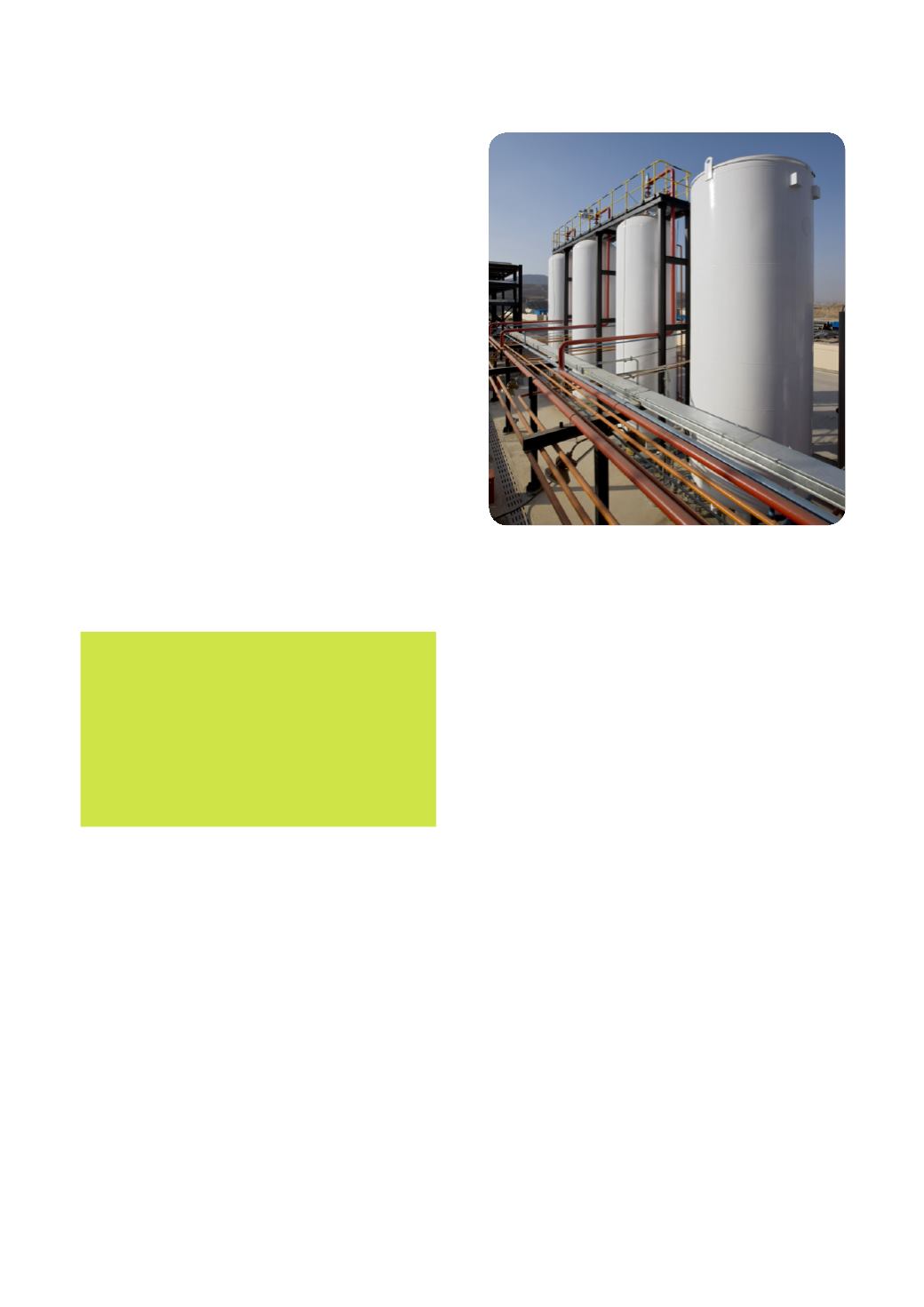
Sustainability Report 2012 • 27
Turning Waste into Energy
Landfill Gas
As the first organisation in Hong Kong to use
landfill gas (LFG) on a commercial basis, we are
a pioneer in the use of this “waste material”. In
1999, we began harvesting LFG from the Shuen
Wan landfill site for use as a heating fuel in our
operations. In 2007, these activities expanded to
the much larger North East NewTerritories (NENT)
landfill site, resulting in one of the largest examples
of this “green”energy recovery and reuse in the
world. Now accounting for about 2% of our total
production fuel, we expect this usage to increase
yet again when negotiations with the Hong Kong
government with regard to the utilisation of LFG
from the South Eastern NewTerritories (SENT)
landfill site are completed.
Coalbed Methane and Coal-mine
Methane Activities
Based on the experience gained in the use of
LFG, we have commissioned China’s first large-
scale coalbed methane (CBM) liquefaction plant
in Shanxi province. CBM, a natural gas found in
coalbeds, like LFG, was traditionally considered
a waste material and flared off on site. However
using cryogenic technology developed in
conjunction with a research institute, our
liquefaction plant converts the purified CBM into
liquid form by freezing it to -162 degrees Celsius.
The resulting liquefied coalbed methane (LCBM) is
600 times more concentrated in energy intensity,
making it easily transportable by road tankers
to wherever it is needed. The first tankers began
to roll out in December 2008. With the opening
of its phase-two facility in March 2011, it is now
operating at its production capacity of 250 million
cubic metres a year.
In view of the benefits of LCBM – it is a safe and
environmentally-friendly energy providing a
clean and quality fuel that is easily transportable,
the extraction of CBM provides a safer working
environment for miners, and it turns a highly
polluting waste material into a valuable resource
– we are exploring further opportunities in this
market. In Guizhou province we have conducted
an innovation test with promising results on
surface extraction of CMB for coal mines of low
permeability.
The use of LFG not only reduces the
release of greenhouse gases into
the atmosphere – it currently saves
41,000 tonnes of carbon emissions
a year and conserves around 13,400
tonnes of naphtha annually.


